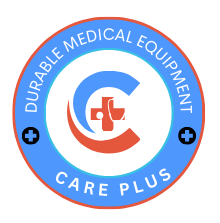Best Medical Equipment for Stroke Recovery at Home 2025 Buyer’s Guide
Introduction: Why Stroke Recovery Requires Specialized Equipment
Recovering from a stroke isn’t just about regaining strength — it’s about rebuilding independence, safety, and daily life routines. Whether you’re caring for a loved one or setting up your own recovery space, having the right medical equipment for stroke recovery at home can make a world of difference in physical healing and emotional confidence.
In 2025, advancements in home care technology and personalized rehabilitation tools have made it easier than ever to recover effectively outside the hospital. But with so many options, it’s crucial to choose equipment that’s evidence-based, therapist-recommended, and comfortable for everyday use.
This buyer’s guide walks you through the top recommended medical equipment for stroke patients recovering at home, categorized by purpose — mobility, safety, daily living, rehabilitation, and monitoring.
1. Mobility Aids: Regain Movement Safely
Stroke survivors often struggle with muscle weakness, coordination, or partial paralysis. The right mobility aids help reduce fall risk and restore independence.
Recommended Equipment:
- 4-Wheel Rollators with Seat: For those with limited stamina or balance issues. Look for lightweight frames and adjustable height.
- Cane with Quad Base: Offers greater support than single-point canes.
- Wheelchairs (Manual or Transport): Essential for longer distances or when mobility is severely limited.
- Transfer Boards: For safer bed-to-chair or toilet transfers.
Tip: Make sure mobility aids are adjusted to the patient’s height and come with non-slip grips.
2. Home Safety Equipment: Prevent Falls & Accidents
Creating a safe environment is key to reducing injury risk during recovery.
Must-Have Equipment:
- Hospital Beds with Side Rails: Provide adjustable head and leg elevation and reduce the risk of rolling out of bed.
- Grab Bars & Toilet Safety Frames: Install in bathrooms, showers, and near the toilet.
- Anti-Slip Mats: Especially important in the bathroom and kitchen.
- Bedside Commodes: Ideal for nighttime use or when access to a bathroom is limited.
Internal Link: Compare Hospital Beds for Home Use
3. Daily Living Aids: Make Everyday Tasks Easier
Simple daily activities like eating, dressing, or grooming can become difficult post-stroke. These adaptive tools promote independence and self-care.
Useful Equipment:
- One-Handed Cutting Boards & Utensils: Help with food preparation using limited motor control.
- Dressing Aids (Zipper Pulls, Button Hooks): Make it easier to get dressed.
- Shower Chairs & Handheld Showerheads: Improve hygiene while reducing slip risks.
- Sock Assist Devices & Long-Handled Shoehorns: Aid those with limited flexibility.
Pro Tip: Consider a daily living aid kit that bundles several tools in one purchase.
4. Rehabilitation & Therapy Tools: Aid Recovery at Home
Physical and occupational therapy don’t stop after discharge. Daily exercise and stimulation at home help rebuild strength and brain-muscle connection.
Recommended Rehab Equipment:
- Grip Strengtheners & Therapy Putty: Rebuild hand function.
- Pedal Exercisers (Seated Cycle): Improve leg circulation and motion.
- Balance Boards & Resistance Bands: Aid motor control and strength.
- Speech Therapy Apps with Tablet Stands: Assist in regaining communication skills.
Bonus Tip: Work with a therapist to build a custom home rehab routine using this equipment.
5. Monitoring Devices: Keep Track of Recovery Progress
Home recovery means patients and caregivers need tools to track health changes and get alerts when something isn’t right.
https://www.fda.gov/medical-devices
Key Monitoring Devices:
- Blood Pressure Monitors: Stroke patients are at risk of future strokes — monitoring BP is critical.
- Pulse Oximeters: Track oxygen levels in real time.
- Medical Alert Systems: Provide 24/7 emergency support with fall detection.
- Smart Health Apps: Sync with devices to share progress with doctors remotely.
External Resource: American Stroke Association Recovery Tools
Where to Buy: Trusted Sources for Medical Equipment
Look for vendors that:
- Accept Medicare or private insurance
- Offer warranties and support
- Have transparent customer reviews
- Guide what requires a prescription
Internal Link: Shop Care Plus DME Equipment
Summary: Set Up for Success, One Step at a Time
The right medical equipment for stroke recovery at home can dramatically improve healing, comfort, and peace of mind. From mobility tools to therapy aids, your environment plays a key role in your recovery journey.
Here’s a quick recap:
- Prioritize comfort and safety with home-ready hospital beds and grab bars
- Improve mobility using rollators, canes, or wheelchairs
- Support therapy goals with hand strengtheners and pedal bikes
- Monitor progress with reliable health tracking devices
- Shop from reputable suppliers with customer-first policies
Take your recovery one step at a time — and equip yourself with the tools that support real, lasting results in 2025.




